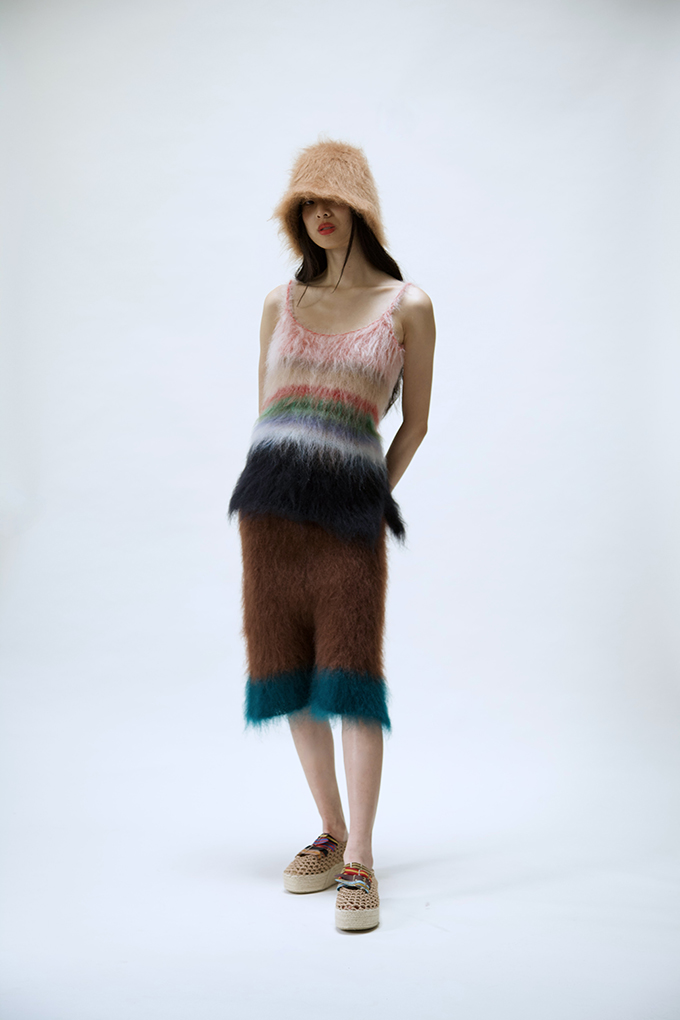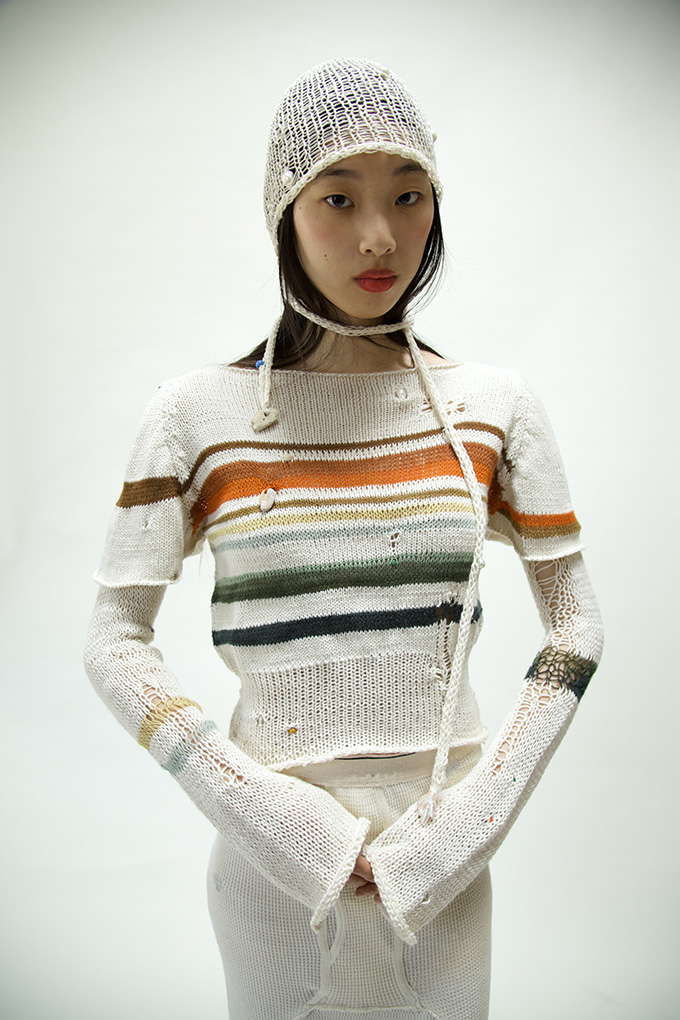“Every act of creation begins with an act of destruction,” said the artist Pablo Picasso; a sentiment that echoes the fashion world’s desire to establish an ethical, carbon-neutral industry. Today, there is a growing momentum behind the belief that clothing should be cherished and that the rapid production of poorly made items is unnecessary. This mood shift is evident in how fashion designers and brands have modified their practices. Take, for instance, John Galliano’s Recicla line for Maison Margiela’s autumn/winter 2020 runway show. A portmanteau of ‘recycle’ and Martin Margiela’s Replica, the collection saw fashion’s enfant terrible undoing the bourgeoisie by reinterpreting second-hand clothes sourced from charity shops and flea markets.
If Recicla pushed the boundaries of upcycling for luxury fashion, the same can be said for what Home and Cherry Phuangfueang are doing with knitwear at their label, Nong Rak. Founded in 2018 by the Thai-American couple, the brand is known for creatively transforming the yarns of old garments into unique, desirable knits. Ever since Nong Rak’s first line of vibrant mohair pieces debuted online, the brand has garnered a cult following—even a seal of approval by Marc Jacobs.

The Phuangfueangs recall starting out Nong Rak in an offbeat way. As young parents who had moved from Thailand to the US, they were in search of a fulfilling path. A shared interest in image-making led to collaborations where the duo would photograph friends dressed in their old clothes. When the couple forayed into the rich world of antiques, they stumbled upon fashion history and clothes-making techniques. Experimenting with knitting patterns and yarns to create organic, wearable fibre art naturally followed suit.
Anchoring Nong Rak’s designs is knitwear’s sensory and tactile aspects. At the top of the label’s priorities? Sourcing the best, cruelty-free materials. Every handcrafted garment is a labour of love, made from dyed yarns and deadstock fabrics with the intent of longevity. Though challenging to obtain these overlooked materials, they make Nong Rak’s pieces one of a kind. “These materials have a tactile presence that piques curiosity, a feeling we hope our work brings out in people,” share the designers. “It often feels like a rite of passage to make new garments out of deadstock vintage yarns, in a nostalgic kind of way, like completing something that was meant to be made in the past.”

Knits are associated with colder climates, but convention does not discourage the Phuangfueangs from producing them inside their Arizona home. In fact, it emboldens them to push the limits of knitwear. Sharing how odd it is to fabricate sweaters when it is sweltering outside, the couple adds: “Impracticality is in ways a playful undertone for our pieces, so we love to refer to that while experimenting with different climates in mind. We also love to work with lighter weight materials such as silk, linen and cotton, which often have a lot more wearability.”
Reimagining knits for warmer temperatures, Nong Rak’s latest collection is a refinement of the brand’s signature pieces. Meanwhile, its ongoing Debris collection is renewed with a fresh look. The line, inspired by items that have been lost or discarded at sea, features pieces that are handwoven with antique beads, genuine pearls and wool locks, along with distressed alpaca yarns.

Nevertheless, it is a tough fight to keep the brand going when artistic freedom and quality are privileged over speed and profitability. Financial concerns and limited stocks add to the stress of operating the self-funded business, but the Phuangfueangs take pride in the fact that Nong Rak’s pieces are irreplaceable by the fast fashion industry and the luxury market. The duo are always ruminating on the question: How do they mindfully grow Nong Rak without becoming wasteful?
“We recognise that an effective way is to not purchase new and to focus on recycling, reusing and mending belongings. Taking that a step farther into our business and design practice takes a lot of reflection and discipline. We’re still learning every day,” the couple explain. “We focus on the reuse or source of materials since production quantities are limited. We plan to find creative ways to approach shipping and packaging mindfully”.

Next on Nong Rak’s agenda is a focus on fortifying its foundations. “After opening our first in-person event in early September for New York Fashion Week, we will be doing the same internationally in spring and amping up production.” With their vision of handcrafted knitwear that rekindles our relationship to time-worn materials, it is exciting to see where the couple will take the brand further. If anything, Nong Rak lives up to its Thai name of ‘young love’, reminding us that a strong commitment to environmental responsibility can go along way in creating change.
For more stories like this, subscribe to the print edition of Vogue Singapore.





